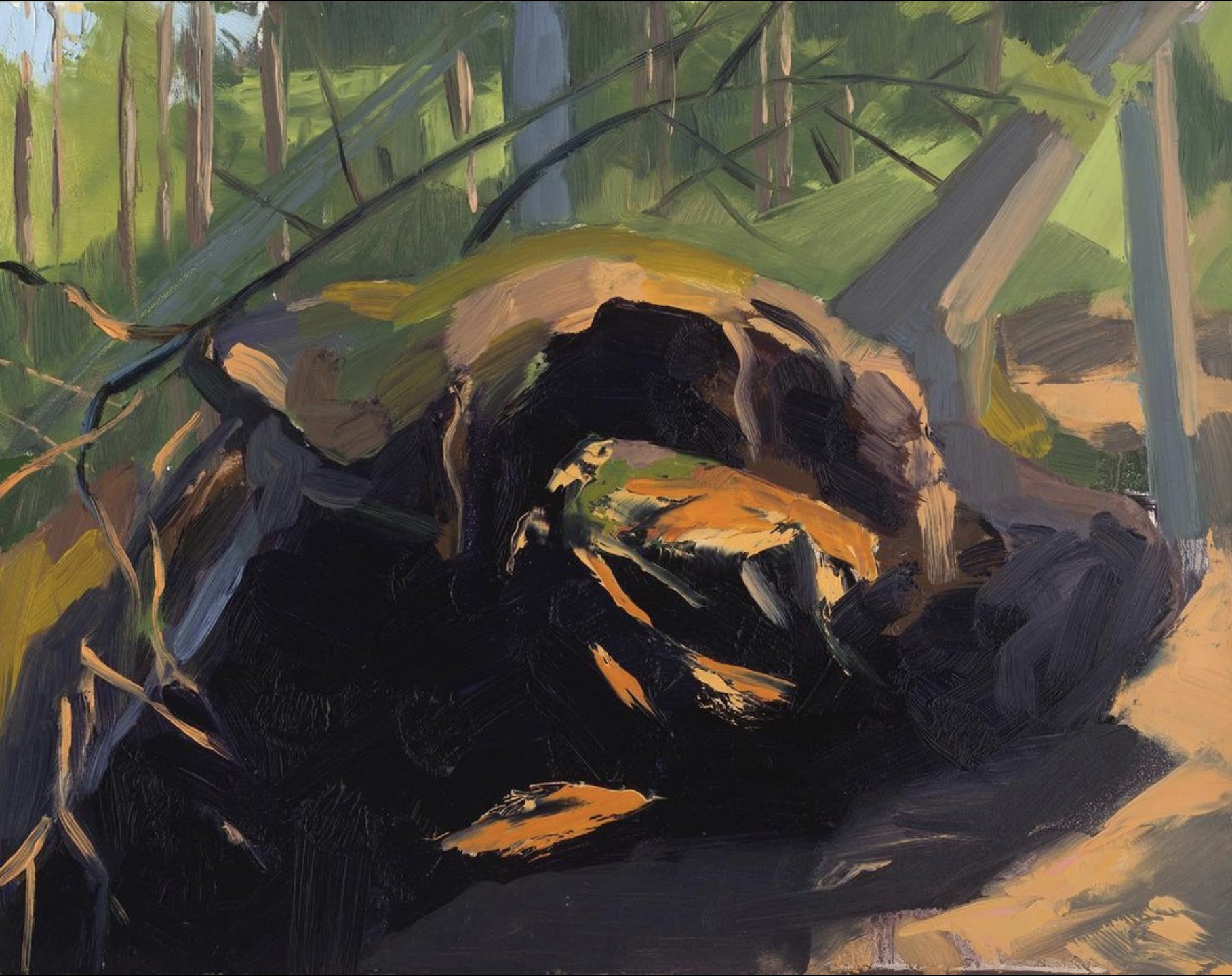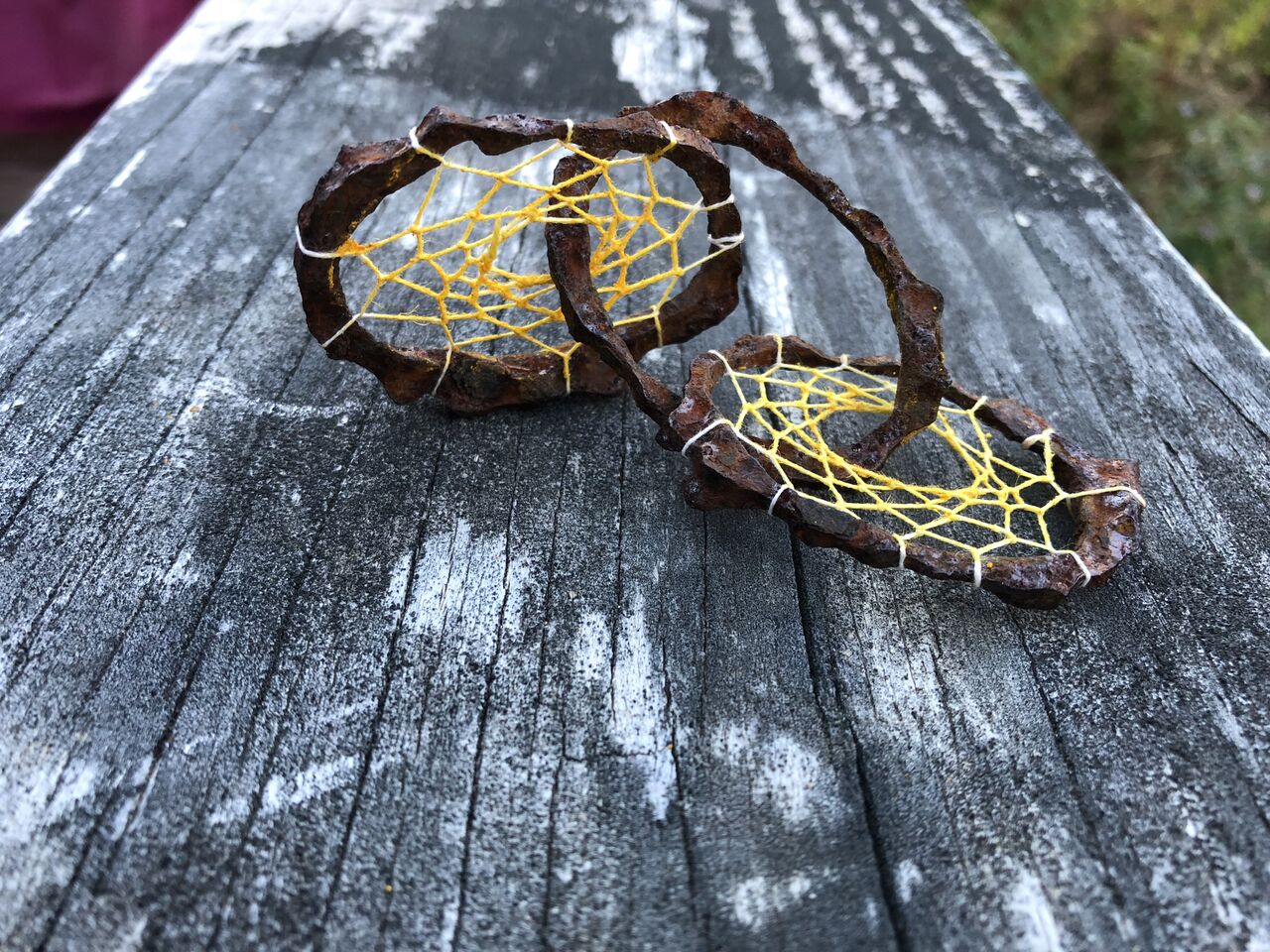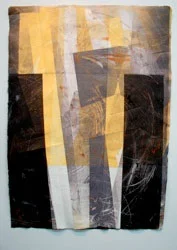2022 Residents
Monhegan Hill Shade, Wind, Signal flag (I need help), 2022
Steve Budington
“On the residency I made drawings and paintings daily from direct observation of one the most interesting landscapes around. During the days I took visual notes while hiking Monhegan’s trail system, and in the afternoons and evenings I worked on a series of paintings in response. The magic of the island – it’s sense of time and the gift of relative solitude – encourage sustained work, reflection, and perspective; after all you can see the arc of the earth from the island’s headlands. I’ve been able to share my experience and some of the islands’ art history with my students at the University of Vermont where I teach painting and drawing. I continue to make work in response to my explorations there, and this fall I’m launching a landscape-based studio course I began developing at the residency.”
I make work in and about the landscape. Maritime signal flags in recent paintings of mine indicate messages like “man overboard,” “call shore,” or “I am trying to communicate with you.” These flags, resembling twentieth-century abstractions in primary colors, were used to communicate emergency, uncertainty at sea, or navigational intention. Like wind maps, elevation charts, and other informational signage, they suggest ongoing or predictive experiences in the landscape.
Uprooted (Orange), oil on archival panel, 11" x 14", 2022
Amanda Case Millis
“The Monhegan Residency was a much-needed opportunity to reflect and lean into my painting on my own. The time and magical surroundings of the island allowed me to go in directions I hadn’t anticipated. I found subject matter that felt more personal. I expected to be completely drawn to the dramatic coastline, but the fallen trees and root structures of the woods inspired me. I am thankful for having the time on Monhegan and know I will continue to investigate what I discovered on the island for a long time to come.”
In our fast-paced and screen-mediated contemporary climate, my paintings bring attention to the moment. I examine the everyday and the often overlooked.
I am in love with looking and responding – and am fascinated by the process of understanding my surroundings and myself through painting. As I work, I search for specific color relationships and geometries. I synthesize the transitory impressions of light and color in nature and record my emotional response. For me, painting is a responsive and mindful act where the aim is not to copy the world but to find a new reality in each painting. In our era of constant distraction, I slow down, look deeply and integrate my physical observations with my interior feelings.
Through and Beyond, mixed media on canvas, 2022
Justine Lasdin Springer
My creative process is driven by those moments of awe, where color, texture, and line play together in a harmonious way. My work explores the scenes of Maine and how looking deeply brings out the colors, shapes, and lines we might not see if we just pass by. I want my work to express that feeling of paused time and capture the abundance of nature that surrounds us.


































